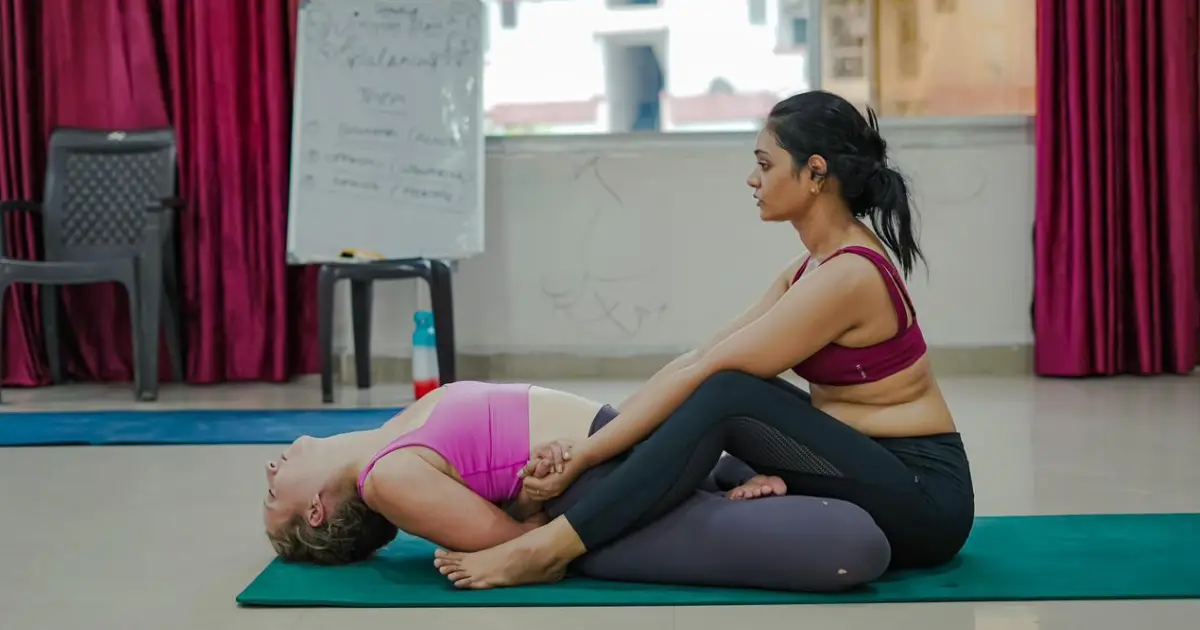
Get A Free Quote


Today we will delve into the world of Hatha Yoga Pradipika and the concept of chakras. So what exactly is Hatha Yoga Pradipika? It's a Sanskrit text written by swami Swatmarama The original name of the text is "Hatha Pradipika," but over time, it became widely known as "Hatha Yoga Pradipika" due to subsequent commentaries and translations.
Let us get into chakras now. This concept originated in Ancient India, where we believe that our body's energy centers are balanced and in harmony, resulting in our overall well-being, improved physical health, and spiritual growth. Let's get our minds, bodies, and spirits in sync and make our yoga practice a transformative and blissful experience!
The term "Pradipika" translates to "light" or "to illuminate," giving the title its meaning as "The Light on Hatha Yoga." The Sanskrit roots of "Ha" (sun) and "Tha" (moon) combined with "yoga" (union) give an alternate translation as "The Light on Uniting the Energies of the Sun and the Moon."
Swami Swatmarama penned this book in the 15th century CE. He drew wisdom from older Sanskrit texts, renowned yogis, and his own personal yoga experiences. Pancham Sinh finished the first English translation of this profound work in 1915, making its wisdom available to a wider audience. This ancient text offers valuable insights and instructions on yogic techniques such as asanas (yoga postures), pranayama (breath control), mudras (gestures), and more. These teachings have withstood the test of time and are still widely practiced around the world.
The chakras act as energy reservoirs where vital prana is stored and circulated throughout the body. Visualize them as spinning wheels, each with its own unique significance and influence. These energy centers span from the base of your spine to the crown of your head. They are known as Muladhara, Swadhisthana, Manipura, Anahata, Vishuddhi, Ajna, Bindu, and Sahasrara. Each chakra influences different bodily functions and is associated with specific colors, animals, and senses, resulting in a complex and interconnected system within us.
Do not worry; Our Yoga trainers will explain each one and help you understand what they represent.
The first chakra, also known as root support, is located at the base of your spine, near the tailbone. The root chakra, also known as the Muladhara, is associated with feelings of stability, security, and groundedness. When balanced, it provides a sense of being rooted in the physical world and connected to the earth.
The Sacral Chakra, also known as Svadhisthana, is located in the pelvic area and is represented by a vibrant orange lotus with six petals. This chakra is closely associated with the element of water, symbolizing qualities such as fluidity, adaptability, creativity, emotions, sexual energy, and the subconscious mind. Its primary purpose is to help us manage our emotions and desires so that they remain balanced and do not overpower us.
This Chakra governs your self-esteem, willpower, and confidence. When balanced, you'll feel empowered, assertive, and capable of handling whatever life throws your way.
The fourth Chakra, as its name implies, is located in the middle of your chest. It is all about love, compassion, and forgiveness with this chakra. You will feel strong connections with others, empathy, and inner peace when it is in harmony. The term "Anahata" means "unstruck" in Sanskrit, describing the chakra's ability to free us from negative emotions, past traumas, and limiting beliefs.
Moving higher, the fifth Chakra is situated in your throat area. The Throat Chakra, also known as the Vishuddha Chakra, is the fifth energy center in the chakra system. It governs our ability to communicate, express ourselves, and be creative. When balanced, it allows us to speak freely and connect on a deeper level. The Throat Chakra, however, can become unbalanced, which can make it challenging to express oneself and communicate.
The sixth Chakra is located between your eyebrows and is often referred to as the "third eye." The third eye chakra, also known as the Ajna Chakra, is the sixth of the seven primary chakras in the body. It is considered the "perception center" and is associated with higher consciousness and spiritual insight. It corresponds to the hypothalamus, pituitary gland, and pineal gland, as well as the eyes, ears, and nose, and is situated in the middle of the brain, about four inches behind the eyebrows.
Lastly, we reach the seventh Chakra, situated at the top of your head. It acts as a bridge between our physical selves and the spiritual realm, allowing us to experience a profound spiritual awakening and expanded perception.

Your chakras' balance or unbalance can have a significant impact on both your physical and mental health. Here's how it works:
When your chakras are balanced, your body's energy system functions properly, supporting your physical well-being. Different organs and systems are connected to each chakra. For instance, the Root Chakra (Muladhara) is connected to the adrenal glands, which control how the body reacts to stress. A balanced Root Chakra can help with immunity, digestion, and overall vitality.
Your chakras have a significant impact on your physical, mental, and emotional health. You experience peace, emotional stability, and centering when they are in balance. For example, a balanced Heart Chakra (Anahata) promotes compassion, love, and wholesome relationships. On the other hand, if your Heart Chakra is out of alignment, you might struggle with possessiveness or feelings of loneliness.
Now, here's where things get interesting: Unbalanced Chakras can lead to various health issues.
For example,
Let us talk about how you can actually put these teachings into practice in your day-to-day life now that we have covered how Chakras can affect health and wellness. Finding harmony and balance within yourself is key.
Alright, folks, let's wrap things up and recap what we've learned today about Chakras and the teachings of the Hatha Yoga Pradipika. Chakras are vital energy centers in our bodies, each with its own distinct features and significance. We focused particularly on the benefits of the sacral chakra, also called Svadhisthana. We feel like the best versions of ourselves—strong, in touch with our emotions, and equipped to handle whatever life throws at us—when they are in balance and flow.
This is where Hatha Yoga Pradipika comes into play. It gives us the methods and tools to harmonize our energy centers, making it possible for us to live happier, more contented lives. Knowledge is power only if you put it into practice, right? Get on the mat, take a deep breath, stretch, and start exploring your chakras.